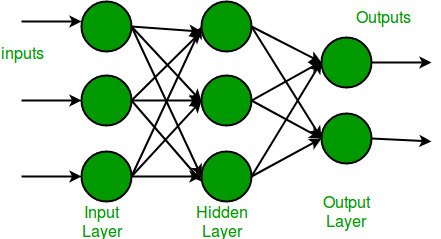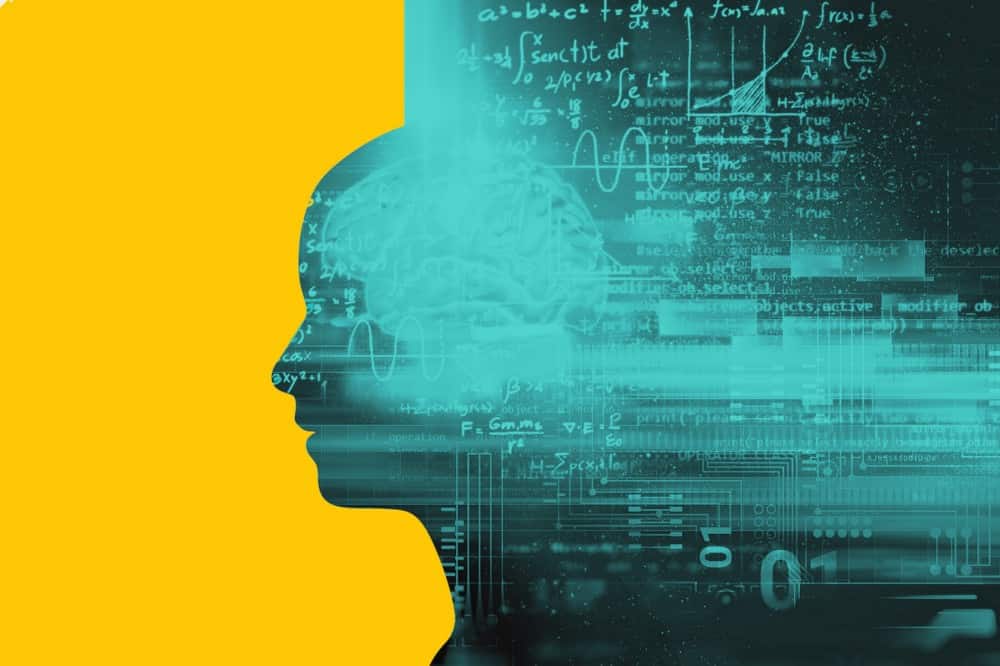
An artificial neural net is an algorithm which can be trained to perform tasks using inputs and targets. This training process is called "supervised training". Data is obtained by comparing the system output with the acquired response. The data is then sent back to the neural system, which can adjust its parameters accordingly. The process of training is repeated until the neural networks achieves a desired level. Data is the key to the training process. If the data are not correct, the algorithm will fail.
Perceptron is the simplest type of artificial neural network
A perceptron can be described as a single-layer, supervisable learning algorithm. It helps detect input data computations in business intelligence. This type of network includes four basic parameters: input. It has the potential to improve computer performance by improving classification rates and predicting future outcomes. Perceptron systems are used in many areas including business intelligence. These include recognizing email and detecting fraud.
Perceptron artificial neural network is the simplest, since it only uses one layer for processing input data. This algorithm can only recognize linearly distinct objects. It uses a threshold-transfer function to distinguish between negative and positive values. It can also only solve a limited class of problems. It needs inputs that are standardized or normalized. To train its weights, it uses a stochastic gradient descend optimization algorithm.

Multilayer Perceptron
A Multilayer Perceptron (MLP) is an artificial neural network that consists of three or more layers - an input layer, a hidden layer, and an output layer. Each node connects with a particular weight to the next layer. Learning is achieved by changing the connection weights and comparing the output to the expected result. This process is known as backpropagation.
The Multilayer Perceptron has a unique architecture that allows it to be trained with more complex data sets. A perceptron may be useful for data that can be separated linearly, but it is limited when it comes to data with nonlinear features. Consider a four-point classification. In this example, there would be a large error in the output if any one of the four points were a non-identical match. Multilayer Perceptron overcomes such limitations by using a more complex architecture in order to learn classification and regression model.
Multilayer feedforward ANN
Multilayer feedforward artificial neuron uses a Backpropagation algorithm to train it. Backpropagation algorithms iteratively learn weights related to class label predictions. A Multilayer artificial neural network that feedforwards class labels is composed of three layers. It has an input layer, a hidden layer or both, and an out layer. Figure 9.2 shows an example of a Multilayer Feedforward Artificial Neural Network.
Multilayer feedforward artificial neural networks have several uses. They can be used in forecasting and classification. Forecasting applications demand that the network minimizes the probability that the target variables have a Gaussian- or Laplacian pattern. By setting the target variable to zero, classification applications can be modified to use the network. Multilayer feedforward artificial neuro networks can achieve perfect results even when there are low Root-Mean Square Errors.

Multilayer Recurrent Neural Network
A multilayer recurrent neural network (MRN) is an artificial neural network with multiple layers. Every layer is identical to the feedforward network's weight parameters. Each layer has different weights for each node. These networks are often used in reinforcement learning. There are three main types of multilayer-recurrent networks: one for deeplearning, another to image processing, and one to recognize speech. Take a look at the main parameters of these networks to understand how they differ.
In conventional recurrent neural systems, the back propagation error tends to disappear. The error propagation rate is determined by the weight of the items. Oscillations may be caused by the weight explosion, but the vanishing problems prevents one from being able to bridge long time delays. In the 1990s, Juergen Schmidhuber & Sepp Hochreiter addressed this problem. These problems can be overcome by the extension of recurrent neuro networks, LSTM. It can learn to bridge time gaps over a large number.
FAQ
Why is AI so important?
It is predicted that we will have trillions connected to the internet within 30 year. These devices will cover everything from fridges to cars. The Internet of Things is made up of billions of connected devices and the internet. IoT devices can communicate with one another and share information. They will also be capable of making their own decisions. For example, a fridge might decide whether to order more milk based on past consumption patterns.
It is anticipated that by 2025, there will have been 50 billion IoT device. This is an enormous opportunity for businesses. It also raises concerns about privacy and security.
What is the role of AI?
An artificial neural network is made up of many simple processors called neurons. Each neuron processes inputs from others neurons using mathematical operations.
Neurons are arranged in layers. Each layer serves a different purpose. The raw data is received by the first layer. This includes sounds, images, and other information. Then it passes these on to the next layer, which processes them further. Finally, the output is produced by the final layer.
Each neuron has an associated weighting value. This value is multiplied with new inputs and added to the total weighted sum of all prior values. The neuron will fire if the result is higher than zero. It sends a signal along the line to the next neurons telling them what they should do.
This process continues until you reach the end of your network. Here are the final results.
Are there any risks associated with AI?
Yes. They always will. AI is a significant threat to society, according to some experts. Others believe that AI is beneficial and necessary for improving the quality of life.
The biggest concern about AI is the potential for misuse. The potential for AI to become too powerful could result in dangerous outcomes. This includes robot overlords and autonomous weapons.
Another risk is that AI could replace jobs. Many people worry that robots may replace workers. However, others believe that artificial Intelligence could help workers focus on other aspects.
Some economists believe that automation will increase productivity and decrease unemployment.
What are the potential benefits of AI
Artificial intelligence is a technology that has the potential to revolutionize how we live our daily lives. It is revolutionizing healthcare, finance, and other industries. It's also predicted to have profound impact on education and government services by 2020.
AI has already been used to solve problems in medicine, transport, energy, security and manufacturing. The possibilities for AI applications will only increase as there are more of them.
What is the secret to its uniqueness? Well, for starters, it learns. Computers learn by themselves, unlike humans. Instead of teaching them, they simply observe patterns in the world and then apply those learned skills when needed.
It's this ability to learn quickly that sets AI apart from traditional software. Computers can quickly read millions of pages each second. They can quickly translate languages and recognize faces.
Artificial intelligence doesn't need to be manipulated by humans, so it can do tasks much faster than human beings. It may even be better than us in certain situations.
In 2017, researchers created a chatbot called Eugene Goostman. It fooled many people into believing it was Vladimir Putin.
This shows that AI can be extremely convincing. Another advantage of AI is its adaptability. It can be trained to perform new tasks easily and efficiently.
This means businesses don't need large investments in expensive IT infrastructures or to hire large numbers.
What can you do with AI?
AI serves two primary purposes.
* Prediction - AI systems are capable of predicting future events. AI can be used to help self-driving cars identify red traffic lights and slow down when they reach them.
* Decision making - AI systems can make decisions for us. So, for example, your phone can identify faces and suggest friends calls.
What does the future look like for AI?
Artificial intelligence (AI), which is the future of artificial intelligence, does not rely on building machines smarter than humans. It focuses instead on creating systems that learn and improve from experience.
So, in other words, we must build machines that learn how learn.
This would mean developing algorithms that could teach each other by example.
You should also think about the possibility of creating your own learning algorithms.
It is important to ensure that they are flexible enough to adapt to all situations.
Statistics
- More than 70 percent of users claim they book trips on their phones, review travel tips, and research local landmarks and restaurants. (builtin.com)
- That's as many of us that have been in that AI space would say, it's about 70 or 80 percent of the work. (finra.org)
- In the first half of 2017, the company discovered and banned 300,000 terrorist-linked accounts, 95 percent of which were found by non-human, artificially intelligent machines. (builtin.com)
- In 2019, AI adoption among large companies increased by 47% compared to 2018, according to the latest Artificial IntelligenceIndex report. (marsner.com)
- While all of it is still what seems like a far way off, the future of this technology presents a Catch-22, able to solve the world's problems and likely to power all the A.I. systems on earth, but also incredibly dangerous in the wrong hands. (forbes.com)
External Links
How To
How to create an AI program that is simple
It is necessary to learn how to code to create simple AI programs. Although there are many programming languages available, we prefer Python. There are many online resources, including YouTube videos and courses, that can be used to help you understand Python.
Here's a quick tutorial on how to set up a basic project called 'Hello World'.
First, you'll need to open a new file. This can be done using Ctrl+N (Windows) or Command+N (Macs).
Type hello world in the box. Enter to save your file.
Press F5 to launch the program.
The program should display Hello World!
But this is only the beginning. These tutorials will show you how to create more complex programs.